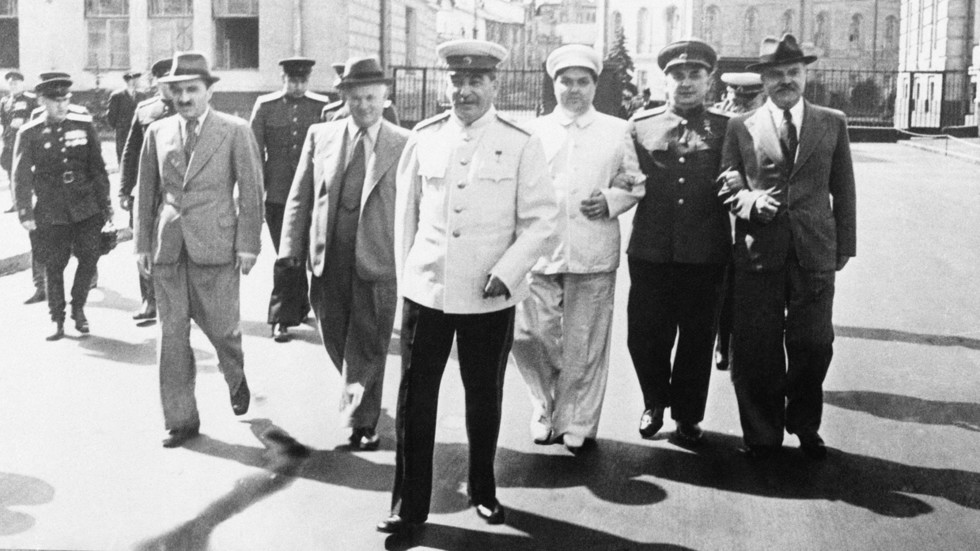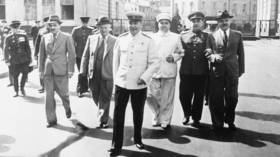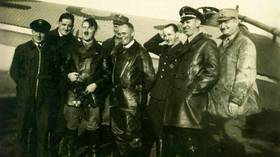
Turncoats posed as agents of the SMERSH counterintelligence service in an attempt to get close to the Soviet leader

FILE PHOTO. Joseph Stalin walks towards Red Square in Moscow, Russia. © Keystone-FranceGamma-Rapho via Getty Images
A family of Nazi spies on a mission to assassinate Joseph Stalin impersonated the very people tasked to identify them – agents of the military security service SMERSH, a veteran Russian counterintelligence officer has said in an interview.
SMERSH was a Soviet wartime organization, the name of which translates as “death to spies.” It was created in 1943, after the tide had turned against the Axis invaders, and the leadership of the USSR needed greater focus on collecting fresh intel for planning offensive operations and stopping would-be saboteurs.
Wednesday marked the 80th anniversary of the creation of SMERSH. Rossiyskaya Gazeta spoke on this occasion to Col. Gen. Aleksandr Bezverkhniy, a former Russian counterintelligence commander and enthusiast of the history of clandestine operations.
The plot to assassinate Stalin was hatched by Operation Zeppelin, Nazi Germany’s effort to recruit Soviet citizens and use them against the USSR. The would-be killers were a married couple, who posed as Pyotr Tavrin, the deputy commander of a SMERSH department in the Baltic, and his typist Lidia Shilova.
The duo was intercepted by agents of the NKVD, the state security service. Their SMERSH cover, which Bezverkhniy called “unique,” was blown after a grenade launcher, a radio-triggered bomb, dozens of rubber stamps and other spy gear was found hidden in their vehicle.

Read more
Their interception in September 1944 proved to be a boon for real SMERSH agents, who pumped them for information and launched a “radio game.” The term, which Soviet intelligence borrowed from their opponents, refers to planting disinformation or eliciting actionable intel using the radios of captured spies.
The game exploiting Tavrin and Shilova lasted till April 1945, when “their” last message was transmitted. SMERSH later found that reports about the agents’ supposed progress in getting closer to Stalin were considered true by the Germans until the end.
During wartime, SMERSH reported catching over 30,000 spies, 3,500 saboteurs, and 6,000 terrorists, Bezverkhniy told the newspaper, citing archive records. Ironically, some of the successes were due to German forgery skills being too good.
Fake papers were often of better quality than the real deal, so SMERSH manuals told operatives to look for particularly good photographs in IDs to root out turncoats. Another classic example was German paperclips, which were made from stainless steel and did not leave rust marks on papers, unlike Soviet ones.
SMERSH was disbanded in 1946, when its expertise on action behind enemy lines was no longer needed due to the conclusion of the war.




